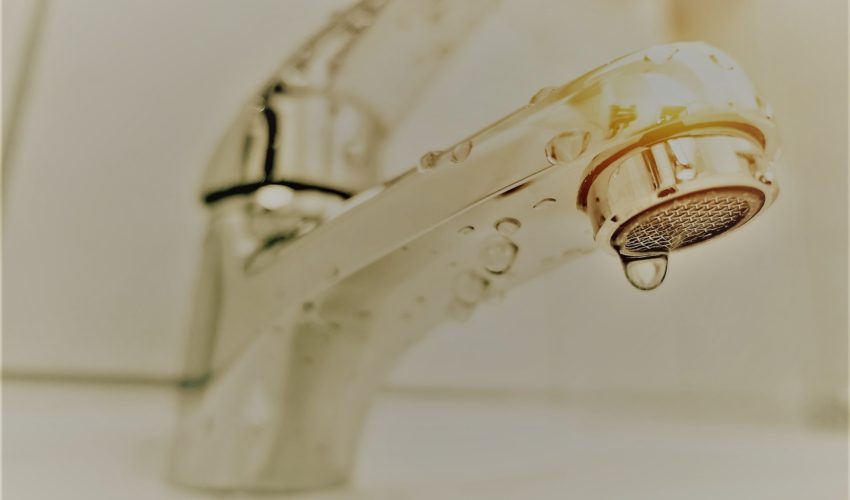We've uncovered this great article involving Dealing with Low Water Pressure in Your Home listed below on the web and think it made sense to share it with you on this site.

Low water stress in your house can be a discouraging trouble, influencing every little thing from showering to cleaning recipes. If you're experiencing weak water circulation, there are a number of feasible causes and services to check out. In this overview, we'll review usual factors for low tide stress and sensible actions to address the problem effectively.
Introduction to Low Water Pressure
Low tide stress happens when the circulation of water from your taps, showers, and other fixtures is weak than normal. This can make everyday jobs more tough and less efficient. Comprehending the causes of low water pressure is essential to locating the best remedy.
Common Reasons For Low Water Stress
Faulty Pressure Regulatory Authorities
Pressure regulatory authorities are in charge of maintaining constant water stress in your home. If they malfunction, it can lead to low water stress or unequal circulation throughout your house.
Metropolitan Water System Issues
In some cases, the issue lies outside your home. Metropolitan supply of water concerns, such as main line leaks or upkeep job, can momentarily decrease water pressure in your area.
Pipeline Obstructions
In time, pipelines can end up being blocked with natural resource, sediment, or debris, restricting the flow of water. This is a typical problem in older homes with galvanized steel pipelines.
Rust
Deterioration within pipes can cause leaks and minimized water pressure. Rust accumulation can tighten water flow, specifically in aging plumbing systems.
Just How to Identify Low Water Pressure
Evaluating Pipes
Examine noticeable pipelines for signs of leaks, rust, or clogs. Take notice of any unusual sounds, such as knocking or rattling pipes, which could show concerns within the plumbing system.
Consulting with a Plumber
If you're not able to pinpoint the root cause of low tide stress, think about employing a professional plumber to conduct a detailed assessment. They can identify underlying concerns and advise appropriate remedies.
Inspecting Faucets and Components
Beginning by checking the water pressure at various taps and components throughout your home. If the concern is separated to particular areas, it might suggest localized issues.
Do It Yourself Solutions to Deal With Low Water Stress
Flushing Hot Water Heater
Sediment accumulation in the hot water heater can restrict circulation and decrease efficiency. Flushing the tank regularly assists get rid of sediment and maintain ideal performance.
Checking Stress Regulatory Authority
Make sure that the stress regulatory authority is functioning correctly. Readjusting or changing the regulator can assist restore proper water stress throughout your home.
Cleaning Aerators and Showerheads
Mineral deposits can accumulate in aerators and showerheads, minimizing water flow. Eliminate and clean up these components routinely to enhance water pressure.
Clearing Up Clogs in Water Lines
For minor obstructions, attempt using a plumbing serpent or chemical drain cleaner to clear blockages in pipes. Beware when utilizing chemicals and adhere to security standards.
When to Call a Professional Plumber
If do it yourself efforts stop working to resolve the problem or if you believe considerable plumbing troubles, it's best to seek help from a qualified plumber. They have the knowledge and devices to resolve intricate concerns safely and efficiently.
Preventive Measures to Keep Water Pressure
Installing a Pressure Booster
Take into consideration setting up a stress booster pump to improve water stress in locations with consistently low circulation. This can be especially advantageous for multi-story homes or buildings with high-demand components.
Monitoring Water Use
Bear in mind water use behaviors and prevent overtaxing the plumbing system. Simple changes, such as astonishing showers and laundry lots, can assist maintain appropriate water stress.
Regular Upkeep
Arrange regular maintenance for your plumbing system to avoid concerns such as deterioration, leakages, and blockages. Addressing minor troubles early can assist avoid even more substantial repair services later.
Conclusion
Taking care of low tide stress can be frustrating, however determining the underlying reasons and applying appropriate services can bring back ideal flow throughout your home. Whether it's cleaning aerators, checking pipelines, or seeking advice from a plumber, taking aggressive actions can make certain a constant supply of water for your day-to-day requirements.
How to Fix Low Water Pressure
Have you noticed the water pressure in your shower or taps seem a little weak? If so, the water pressure in your home may be lower than it should be.
Low water pressure can affect many areas of your home. You might notice it taking longer to fill the bathtub or washing machine or that you’re not getting the pressure you need from your garden hose.
These pressure changes can be sudden or may happen over time. It may take a little investigating to find the cause, but there’s usually an easy solution.
Testing Water Pressure in Your Home
One easy way to check water pressure at home is with a water pressure gauge. You can find one online or at a hardware or home improvement store.
Before you check the pressure, make sure the taps and appliances that use water are turned off. Then, connect the gauge to the exterior hose bib or tap.
Turn the tap up all the way and read the gauge to see the water pressure. If you don’t have an exterior tap, you can disconnect the hose of your washing machine and connect the water pressure gauge to it.
Make sure all your water-using appliances are turned off. Turn the faucet on high to read your home’s pressure or PSI.
If the idea of checking water pressure or dealing with plumbing issues on your own seems a bit daunting, you can call a professional plumbing service to handle the job.
They can help you find the root of your water pressure issues and determine the best solution to the problem.
Clear the Clogs
A clogged pipe is one of the most common issues that leads to low or no water pressure. Pipes can become clogged due to a buildup of mineral deposits.
This is especially true if you have hard water where you live. Even a small clog can reduce the pressure of water running through the pipes.
Clogs usually build up over time. People notice when it affects their showers or the appliances that use water every day.
There are products and tools for clearing clogs on your own or you can call a plumber. They have the expertise and the right tools to locate clogs and determine whether it’s better to repair or replace the pipe.
Clean or Replace Corroded Pipes
Do you live in an older home where the plumbing is decades old? If so, your pipes are probably prone to corrosion. This is especially true if the pipes are galvanised steel.
This material is likely to corrode after 20 years of use. Brass pipes average 40 to 70 years before corroding, while copper pipes are good for 50 years or more.
If you installed extra plumbing fixtures after building or moving into your home, there’s a good chance you could have corroded pipes. The more plumbing fixtures in the home, the harder your pipes have to work, and the more likely they will corrode.
It’s important to address pipe corrosion. Failing to fix the problem can lead to cracked pipes, major leaks, and water damage in your home.
Swapping out old plumbing pipes reduces the risk of corrosives. Updated plumbing produces cleaner and better-tasting water, too.
Seal the Leaks
Another cause of low water pressure could be a leak in the pipes or in the water line. Small cracks or holes leak water into unintended areas before the water can reach the various taps in your home.
If your basement or foundation has flooded, it’s a strong sign of leaking pipes. You can look for leaks by turning off the taps for a couple of hours. Then, check the water metre reading.
An increase may indicate a leak. To see or access the plumbing, check for wet spots or pooling water. If you find a leaking pipe, there could be more.
You may not be able to reach these spots on your own, so it’s a good idea to enlist the help of a professional plumber at this point. They can check all your pipes for leaks and repair or replace damaged ones to restore adequate water pressure.
It’s important to address water leaks right away. Standing water can lead to mould or mildew growing in your home.
Replace the Pressure Regulator
Do you have a pressure regulator in your house? It’s a valve that helps keep the water pressure entering your home at safe levels. A functioning regulator keeps the pressure constant and flowing at around 50 PSI.
High water pressure may damage your plumbing and lead to excess stress on your appliances that use water. When a pressure regulator fails, it can lead to an increase or decrease in pressure.
Sediment or debris in the value can cause a blockage. You can check the pressure regulator by attaching the pressure gauge to an outdoor spigot. If the pressure reads lower than the valve reported, the regulator may be faulty.
A plumbing expert can assess whether the pressure regulator is working for your home. It’s important to replace a failed regulator.
Instal a Booster Pump
Sometimes you may look everywhere to discover the cause of low water pressure but not find an answer. Talk to your neighbours to see if they’re having similar issues.
If other homeowners near you are experiencing water pressure problems, installing a booster pump may be a good solution. It can increase water pressure to the main supply line that runs to your home’s system.
An experienced pro in UK plumbing issues can help you install a booster and restore the water pressure to your house.
How to Fix Low Water Pressure
If you notice the water pressure in your home is less than what it should be, there are a variety of possible problems and solutions. If you’re not a plumbing expert or don’t have the time to spare for DIY plumbing issues, call the pros instead.
At PM247, we know how to improve low water pressure in your home. Simply tell us the plumbing issue you’re having and we will take it from there.
For over 20 years, we’ve provided professional plumbing, drainage, roofing, heating, and electrical services to our customers. We would love to help you, too!
https://www.pm247.co.uk/blog/how-improve-low-water-pressure/

I'm certainly very interested by 9 Reasons for Low Water Pressure in Your House and I'm hoping you enjoyed reading the new blog entry. Enjoyed our article? Please quickly share it. Help other people find it. I value reading our article about .
Click Here
Comments on “Tested Methods for Resolving Low Water Pressure in Your Home”